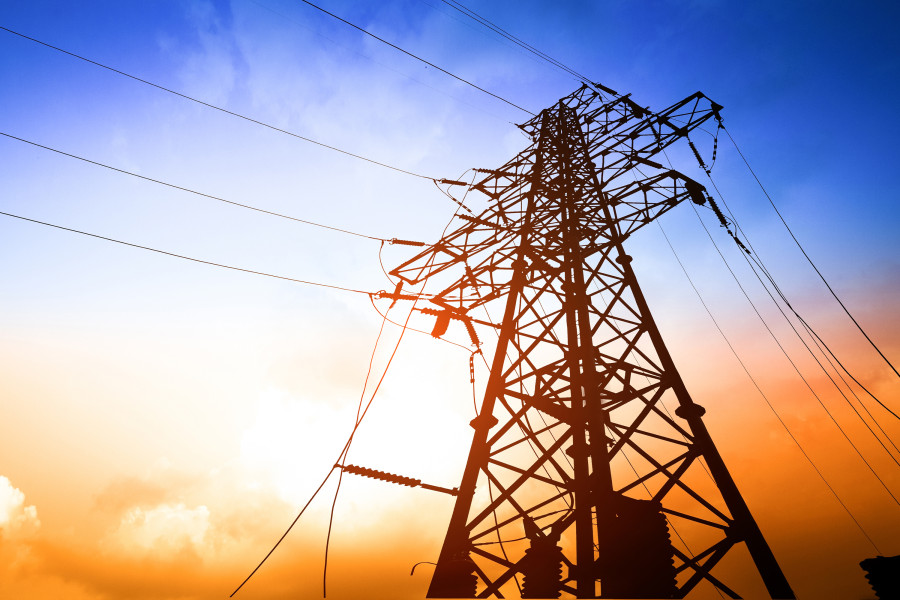Columns
Gen-next power sector reforms
The private sector and the NEA must team up to develop it through trading with India.
Bishal Thapa
Goddess Lakshmi didn’t just smile on Nepal’s electricity fortunes this Tihar. The Hindu goddess of wealth rained down blessings like never before. On the day of Lakshmi Puja, October 24, the state-owned utility Nepal Electricity Authority (NEA) exported 9,603,000 kilowatt hours of electricity to India, 406,000 kilowatt hours of it during peak hours, earning approximately Rs30 million in the process. The NEA began trading electricity through India’s power exchange in June after obtaining approval from the Indian government. During the three-month period from mid-July to mid-October, the NEA earned approximately Rs3.7 billion in net exports. To get a scale of these earnings, picture this: The export revenues are enough to give each of its household customers a gift of Rs1,022.
The NEA’s recent earnings from electricity exports have vindicated its strategy to integrate Nepal’s power system firmly with India’s electricity market. The voices that protested, including me that cautioned against an integrated cross-border electricity structure, have been proven wrong—at least for now. Nepal’s long cherished dream of exporting electricity and earning billions is finally being realised. This is clearly a moment for NEA and the government of Nepal to soak in the applause. The debate over pursuing energy trading with India is now closed. But the risks from integrating with India’s power markets haven’t gone away. There is still much that must be said and much that remains to be heard.
Adjusting to a new era
Nepal is now integrated with India’s power market. As the development of additional cross-border transmission lines accelerates, some of it enabled by United States assistance under Millennium Challenge Corporation, there is no doubt that Nepal’s power sector is in a new era of cross-border electricity trading. There is no turning back now. Can Nepal reform fast enough to adjust and thrive in this new reality? The NEA’s exports this year have come during a period of unusually high prices in India’s electricity exchanges. Power prices rose sharply starting October 2021. Between June and October 2021, for example, the average day ahead market clearing prices on the Indian Electricity Exchange increased approximately 260 percent to 300 percent.
India’s power sector regulator, the Central Electricity Regulatory Commission (CERC), noted that by March 2022 the day ahead and real time markets (where the NEA trades) had twice as many buyers as sellers. Market clearing prices were repeatedly hitting the exchange’s ceiling of INR20 (Rs32) per unit. In April 2022, the CERC capped the power price on the exchanges at INR12 per unit and renewed that ceiling in September. That maximum limit will remain in place through the end of the year. The challenge for Nepal will begin when India’s power prices return to normal levels. In the past, day ahead prices on the exchanges have ranged between INR3 and 4 per unit. Renewable energy may push these prices lower. Prices may be even lower in long-term contracts. Will Nepal’s new power plants remain competitive against those prices?
India’s short-term power trading markets—the day ahead and real time—provide Nepal a good outlet for its surplus power. But these markets cannot induce new capacity to be built. Almost all new power plants in India are built on the back of firm long-term power contracts. In the entire Indian power system, only three plants are operating on a merchant basis without the guarantee of long-term power purchases, my former colleague reminded me. New hydro plants in Nepal will similarly only be built if there is certainty of firm power purchases over the long term. Only the NEA can currently provide that guarantee.
New hydro plants with a combined capacity of approximately 7,000 megawatts are stuck waiting for the NEA to sign power purchase agreements, a leading Nepali power sector professional explained to me. The NEA has suspended signing new power purchase agreements for the last few years, he says. That suspension is, perhaps, for a reason. The NEA estimates that there isn’t enough domestic demand to absorb all the projected supply. It doesn’t want to be saddled with all that energy with nowhere to sell it. Prices and sales in India’s day ahead and real time power trading exchanges are not guaranteed. Committed purchases without committed sales would place the NEA in too much risk.
How can power trading with India induce new capacity to be built in Nepal? Without access to India’s long-term power purchase agreements, there is no easy answer, unfortunately. This may be where Nepal must draw from an understanding of how India’s power markets evolved. India has undertaken significant power sector reforms over the last two decades. The introduction of real time trading two years ago, for example, was the result of deep structural changes that had been paralysed for a decade in struggles between different agencies and in the courts.
Reforms urgently required
India’s electricity market, from which the NEA is expected to harvest Rs4 billion this year, is a product of those reforms. Further reforms are still unfolding. But there is now a base strong enough to support a robust trading platform. Nepal's approach to power trading has lacked any meaningful reforms. It has plunged the NEA into electricity trading with the hope that the necessary reforms will follow. These reforms are now urgently required. Simply put, and as the power sector professional summarised it so aptly for me, “The NEA cannot do it all by itself.”
The core to India’s power sector reforms was in allowing the private sector to participate. It allowed for risks to be diversified, capacity to be enhanced, and capital to be injected, thus helping the market to mature. Nepal’s power sector must rapidly reform to enable the private sector to supplement, collaborate and partner with the NEA in developing its power sector through trading with India. Without reforms, Goddess Lakshmi may find less reason to smile upon us, especially if all that power trading does is to lock us into an era of Indian power imports, while the vast potential of Nepal’s hydro simply flows down the rivers.




 16.12°C Kathmandu
16.12°C Kathmandu















